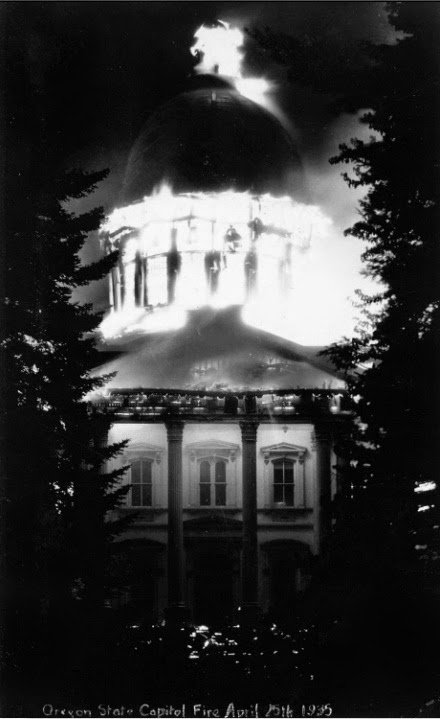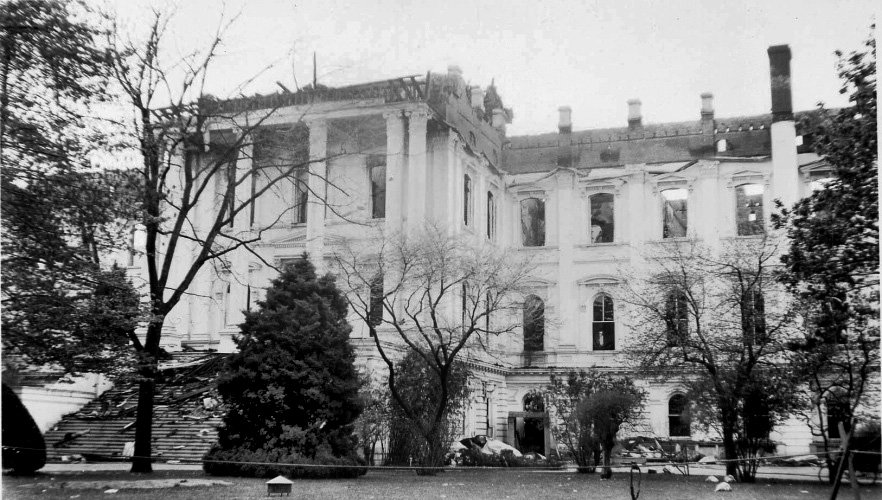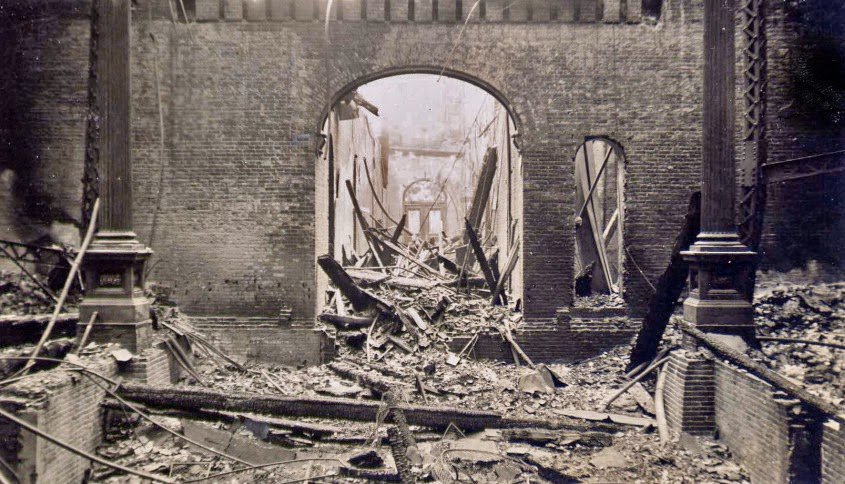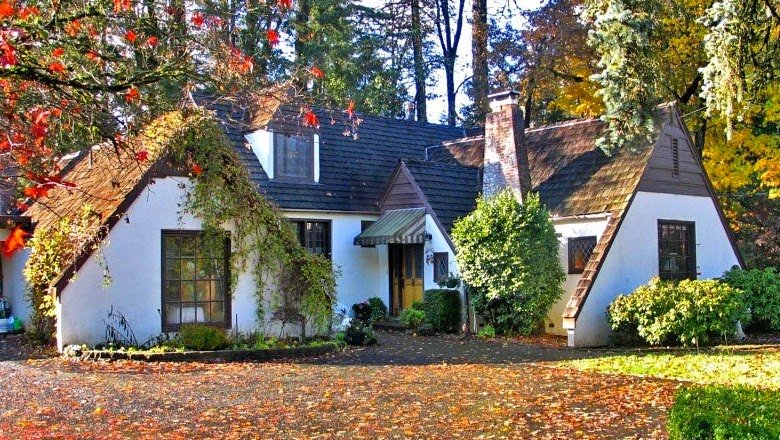- Congress passes the Social Security Act.
- Senator Huey Long is assassinated in Louisiana. (“All the King’s Men”, a 1949 film, was based on prize-winning novel, based on Long’s life, by Robert Penn Warren.)
- Great dust storms in the U.S. hit the mid-west the hardest. The Dust Bowl ballads and photographs will become classics. Grapes of Wrath, a novel published in 1939 captures the plight of farmers forced to leave their homes and migrate to the possible opportunities in California.
- To give employment in the Depression, The Works Progress Administration (WPA) and other government-funded work programs are instituted. Hoover Dam, dedicated this year, had many of these skilled laborers.
- Radar equipment able to detect aircraft is developed. Humorist Will Rogers and pilot Wiley Post are killed when their plane crashes in Alaska.
- Alcoholics Anonymous (AA) is founded.
- The Academy Award goes to “Mutiny on the Bounty”. Applauded as the most original fiction of the year is The Circus of Dr. Lao by Charles G. Finney. Pulitzer Prize: Now in November, Josephine Winslow Johnson.
In Salem
 |
| The State House fire beginning in the late afternoon… |
 |
| …its climax that night. |
 |
| Ruins of the State House with dome collapsed, April 1935 |
 |
| Interior of the Sate House the morning after fire |
These photographs taken the next day demonstrate the tragedy. The neighbors lived with the ruins for many months as the state authorities decided how, and where, to rebuild.
Immediately after the fire, discussions had begun as to where a new capitol building should be constructed: in the same place or, perhaps the Candalaria Hills? If in the original location, how can new state buildings, needed for many years, be accommodated in that core of the city surrounded by Willamette University on the south, the railroad tracks on the east, the stately residential “Piety Hill” on the north, and the downtown on the west?
Meanwhile, where would the governor and legislature be housed? Kathleen Carlson Clements wrote, “State clerks spent the day after the fire sorting through saved records and filing cabinets, removed to the armory during the fire. The businessmen of Salem called a special session of the Chamber of Commerce to offer space for state offices displaced by the fire, which were quickly set up at various locations including the Oregon Building and the Supreme Court Building. President Franklin D. Roosevelt sent a cable expressing his sympathies and offering federal aid in rebuilding.”
When you visit
Today this site is completed changed with the newly positioned building and the area half a mile to the north transformed from residential to state offices. By 1939 the new Vermont marble Capitol (not called the State House anymore) was constructed in a modern style of on the same site, facing north instead of west. Needing new office space, the state acquired by “eminent domain” the immediate residential area 4 blocks to the north of the Capitol and over the next twenty years, from 1937 to 1959, the dignified “Piety Hill” homes were either demolished or sold for removal. A few that survived in another location were those associated with the families Judge Henry Bean, Mayor Louis Lachmund, Ladd and Bush Bank officers David Eyre and Joseph Baumgartner, pioneer descendant Cora Moores, prominent physician Dr. Frederick Thompson and Judge Brand. Lost were the homes of prominent families such as Kay, Patton, Spaulding, Miles, Bush, McNary, Barnes, Albert, Rigdon, Bishop and many others. The First Presbyterian Church was moved, another church demolished. In all, the process took 20 years and created the North Capitol Mall with four state buildings: the first, in 1937, was the Oregon State Library.
Floyd McMullen, a 22-year-old Willamette University Student and a volunteer “sleeper” for Salem Fire Department, is the only fatality. He dies of injuries sustained from falling debris inside the building.
Seventy-five years later, Floyd McMullen remains the only Salem fire fighter to die while on duty. Fire Station #7 is dedicated to his memory and contains a museum with artifacts from the fire which so greatly changed the future of Salem.
Other events
- V. E. Kuhn is elected mayor and he showed strength in pursuing a North Santiam, clean water source. The business community was against such a “risky venture” at such high cost. A pipeline and treatment system from Stayton Island was accepted by the City Council.
- Max and Mark Gehlhar establish the Oregon Fruit Products Company in West Salem. The fruit dryer was destroyed by fire, but the cannery building across the street was saved.
- Dancing is allowed at Willamette University for the first time.
- An unusual, cobbled-stone English Cottage style house is built on D Street for Guy and Edele Irwin. Mr. Irwin worked as a meat packer. After his death, Mrs. Irwin married Ernest Hobbs and continued to reside here into the 1960s. Mr. Hobbs was employed at the State Printing Board. The house was acquired by the State in the late 1990s is now an office. This former residence and the Adolphson house next door are the only two North Capitol Mall Heritage Park houses still in their original locations. They are both designated as Local Landmarks.
- Along Church Street, on the east side of Fry Hill, Daniel Fry builds homes to rent. Employees of his Commercial Street Drug Store occupy several. Conde McCullough, a bridge engineer, rents one. He may have influenced the design of the Church Street Bridge across Pringle Creek near this house. (The bridge is credited to R. A. Furrow, a city bridge engineer.) Mr. McCullough later moved to an English Arts and Crafts residence on Leffelle Street designed by Clarence Smith. McCullough favored the arch form for bridges, taking Oregon bridge building to a fine art. He designed 32 major arch bridges existing in Oregon and a prototype for a covered bridge that was used as a model for many of the covered bridges built in Oregon between 1905 and 1925. He died suddenly at his home in Salem in 1946.
 |
| The Tonning House |
- South of the city, a young couple’s romantic vision of an English cottage leads to the construction of a remarkably beautiful home on Croisan Creek Road that became known as the Tonning House. This residence, modeled on an architect’s “dream home” that had won a blue ribbon in the 1933 Chicago World’s Fair, was begun in 1935, but completed later by new owners, Nels and Olga Tonning. Among the guests in their more than thirty years of hospitality were John Croisan and his wife who had lived in the old homestead on the back of the property. When their home burned down, they lived upstairs while they were building another home next door. This house is in the Croisan-Illahe neighborhood (now SWAN).

